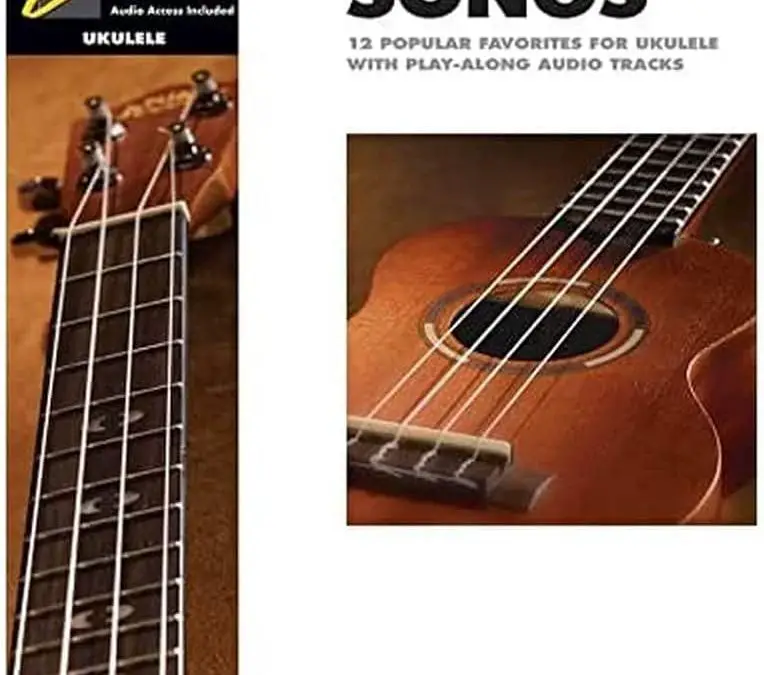Have you ever strummed your guitar like a pro only to realize you’ve been playing the same three chords over and over again? Well, fear not my fellow musicians, because we’re here to show you how to master varied strumming techniques and add some serious musical depth to your repertoire. So grab your guitar, loosen up those fingers, and get ready to strum like you’ve never strummed before!
Contents
- 1 Exploring the Basics of Guitar Strumming for Enhanced Musical Expression
- 2 The Art of Dynamic Strumming: Controlling Volume and Attack
- 3 Incorporating Upstrokes and Downstrokes for Rhythmic Complexity
- 4 The Role of Muting Techniques in Creating Textural Varieties
- 5 Expanding Your Sound Palette with Advanced Fingerpicking Styles
- 6 Leveraging Percussive Strums for Added Rhythmic Interest
- 7 Navigating Between Strumming Patterns to Maintain Listener Engagement
- 8 FAQs
- 9 Time to Strum like a Pro!
Exploring the Basics of Guitar Strumming for Enhanced Musical Expression
Let’s dive into the wonderful world of guitar strumming, where you can unleash your inner rock star and impress all your friends with your mad skills. Strumming is like the secret sauce that brings a song to life, so let’s sprinkle some of that magic on our musical journey.
First things first, make sure you have a good grip on your guitar pick. You don’t want it flying across the room like a tiny ninja star. Hold it between your thumb and index finger with a firm yet gentle touch, like you’re holding a delicate little bird that you don’t want to crush.
Now, let’s talk about the actual strumming motion. Imagine you’re brushing crumbs off a table with a feather duster, except in this case, the crumbs are sweet guitar chords and the feather duster is your trusty pick. Keep your wrist loose and let the pick glide across the strings like a smooth criminal.
Experiment with different rhythms and patterns to spice up your strumming game. Try out some funky syncopated beats, playful triplets, or even some good old-fashioned power chords. Remember, the key to mastering guitar strumming is practice, practice, and more practice. So grab your guitar, channel your inner rock god, and let the music flow through you!

The Art of Dynamic Strumming: Controlling Volume and Attack
So you’ve mastered the basic strumming patterns and can play a few chords like a pro. But now, it’s time to take your strumming skills to the next level with dynamic strumming. This technique involves controlling the volume and attack of your strums to add depth and intricacy to your playing.
One way to control volume is by adjusting the pressure of your strumming hand on the strings. Press down harder for a louder sound and ease up for a softer sound. Experiment with different levels of pressure to find the right balance for the song you’re playing. Remember, practice makes perfect!
Another key aspect of dynamic strumming is controlling the attack of your strums. This refers to how forcefully you strike the strings with your pick. A strong attack will result in a more aggressive sound, while a softer attack will produce a gentler sound. Mix up your attacks to add variety and interest to your playing.
So, grab your guitar, unleash your inner rock star, and start experimenting with dynamic strumming techniques. With a little practice and a lot of determination, you’ll soon be strumming like a pro, controlling volume and attack with finesse and flair. Rock on!

Incorporating Upstrokes and Downstrokes for Rhythmic Complexity
Have you ever felt like your guitar playing is missing a little extra spice? Well, say hello to incorporating upstrokes and downstrokes for some rhythmic complexity! These simple techniques can take your playing to the next level and make you sound like a true guitar wizard. So put on your wizard hat and let’s dive into the magical world of upstrokes and downstrokes!
First off, let’s talk about upstrokes. These sneaky little strokes can add a whole new dimension to your playing. Think of them as the extra kick in your morning coffee – they wake up your playing and make it pop! So next time you’re strumming away, don’t forget to throw in some upstrokes to keep things interesting. Who knew moving your pick in the opposite direction could make such a difference?
Now, let’s move on to downstrokes. These bad boys are the backbone of your rhythm playing. They’re like the sturdy oak tree that holds everything together. When in doubt, just throw in some downstrokes and watch as your playing gets a whole lot groovier. Remember, downstrokes are your best friend – they’ve got your back no matter what!
So there you have it, folks – is the secret sauce to becoming a guitar master. Embrace these techniques, practice till your fingers bleed, and soon enough, you’ll be strumming like a rockstar. So go forth, fellow guitarists, and conquer the world with your newfound knowledge!

The Role of Muting Techniques in Creating Textural Varieties
When it comes to creating textural varieties in music, muting techniques are like a magician’s wand - they add a touch of mystery and intrigue to the sound. Muting techniques involve stopping the vibration of the strings in various ways, ultimately creating a different sound quality that can add depth and complexity to a piece.
One popular muting technique is the palm muting, where the palm of the hand is placed near the bridge of the guitar to dampen the sound. This technique creates a percussive, muffled effect that can add a funky, rhythmic groove to your playing.
Another cool muting technique is left-hand muting, where the fingers of the left hand lightly touch the strings while playing. This creates a staccato, choppy sound that can add a unique texture to your music. It’s like giving your guitar a little tickle to make it giggle.
And let’s not forget about mute slides – where the guitarist slides their hand up or down the neck while actively muting the strings. This technique can create a haunting, eerie sound that adds drama and tension to your music. Think of it as the musical equivalent of a ghostly whisper in a dark, haunted hallway.

Expanding Your Sound Palette with Advanced Fingerpicking Styles
Ready to take your fingerpicking skills to the next level? Look no further! We’ve got some advanced fingerpicking styles that will expand your sound palette and amaze your audience. Let’s dive in!
First up, let’s talk about the Clawhammer technique. This style involves using your fingers as a claw to strike the strings in a rhythmic and percussive manner. It creates a unique, banjo-like sound that will add a whole new dimension to your playing. Give it a try and watch as jaws drop in awe!
Next, why not try incorporating some Travis Picking into your repertoire? Named after the legendary Merle Travis, this style involves alternating bass notes with melodies to create a rich and full sound. It’s a challenging technique, but the payoff is well worth it. Your fingers will be flying across the strings in no time!
And finally, don’t forget about the Flamenco style. This passionate and fiery technique involves intricate finger movements and rapid strumming patterns. With its roots in Spanish guitar music, Flamenco fingerpicking will bring a touch of exotic flair to your playing. Get ready to transport your audience to a sun-drenched villa in Andalucia!
Leveraging Percussive Strums for Added Rhythmic Interest
Looking to add some flair to your guitar playing? Percussive strums are a great way to spice up your rhythms and impress your audience. By incorporating techniques like muted strums, taps, and slaps, you can create a funky groove that will have everyone tapping their feet.
One way to leverage percussive strums is to experiment with different strumming patterns. Try mixing up your downstrokes and upstrokes to create interesting rhythmic variations. You can also play around with accents to highlight certain beats and add drama to your playing.
Another fun technique to try is incorporating percussive elements into your chord changes. By adding a quick tap or slap between chords, you can create a mini drum solo right on your guitar. This is sure to grab your audience’s attention and keep them hooked on your performance.
So next time you pick up your guitar, don’t be afraid to get a little funky with your strumming. With a bit of practice and creativity, you can take your playing to the next level and become a true rhythm master. Rock on!
Have you ever found yourself stuck in a rut with your strumming patterns, playing the same old chords in the same old way? Fear not, my fellow musicians, for I am here to guide you through the treacherous waters of strumming pattern monotony. Here are some tips and tricks to help you navigate between different strumming patterns and keep your listeners engaged:
- Experiment with different rhythms – don’t be afraid to mix it up and try something new. Who knows, you might just stumble upon a killer strumming pattern that will elevate your song to a whole new level.
- Use dynamic contrast – vary the intensity of your strumming to add depth and emotion to your music. A gentle strum here, a fierce attack there – the possibilities are endless!
- Listen to your favorite songs and pay attention to how different artists use strumming patterns to create interest and build tension. Learn from the best and incorporate their techniques into your own playing.
Remember, the key to maintaining listener engagement is to keep things fresh and exciting. Don’t be afraid to step out of your comfort zone and try something new – your audience will thank you for it. So go forth, dear musicians, and strum on!
FAQs
How can mastering varied strumming techniques enhance the depth of my music?
Well, imagine your music is a cake. Different strumming techniques are like different layers of delicious frosting that add flavor and texture to the overall sound. By mastering varied strumming techniques, you can create a more dynamic and interesting musical experience for yourself and your listeners.
What are some common strumming patterns I should learn?
Oh, the possibilities are endless! You could start with basic patterns like downstrokes, upstrokes, and simple combinations of the two. Then, you can spice things up with more complex patterns like the famous “D-D-U-U-D-U” or ”D-D-D-U” patterns. The key is to experiment and find what works best for the song you’re playing.
How can I improve my strumming technique?
Practice, practice, practice! Just like any other skill, mastering strumming techniques takes time and dedication. Start by playing along with your favorite songs and focusing on perfecting your rhythm and timing. You can also try exercises like using a metronome or playing along to drum tracks to improve your consistency and precision.
Are there any tips for mastering more advanced strumming techniques?
Absolutely! One tip is to break down complex patterns into smaller, more manageable parts and practice each part separately before putting it all together. You can also experiment with different dynamics, accents, and strumming directions to add depth and nuance to your playing. And don’t forget to have fun and let your creativity shine!
Time to Strum like a Pro!
So there you have it, aspiring musicians! With these varied strumming techniques in your arsenal, you’ll be sure to impress audiences and add a whole new level of depth to your music. Remember, practice makes perfect, so don’t be afraid to experiment and find your own unique style. Now go forth and strum like the rockstar you were always meant to be!



